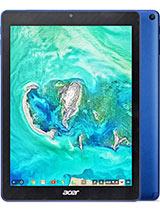Acer Chromebook Tab 10 Hands-On By Engadget
Google and various hardware manufacturers tried to make Android tablets catch on for years, but they never did primarily because app developers never embraced the big screen the way they did for the iPad. So now, Google and ASR are trying something different. The new Chromebook Tab 10 is the first device running Chrome OS without a keyboard. The $330 tablet is aimed at the education market. Much like Apple's, recently updated iPad is a Chrome OS fan I set out to see if Google's software works as well on a tablet as it does on a laptop Google answer, have both been explicit, that this is intended for classrooms and aren't positioning it as a general consumer product. So it won't judge the hardware too harshly here.
Still it's worth taking a look at what $330 gets you, especially since the new iPad cost the same amount, the Tab 10 features a nine point. Seven-inch screen the same size and resolution as you'll find on the iPad. It's one of the better things about this device. It's crisp and bright. Viewing angles aren't great, but they're.
Good enough battery life is also excellent. Coming in around Acer's nine-hour estimate, I typically don't use tablets for hours on end; instead, I'll usually pick it up, use it for an hour or so here, and there doing that I was able to get several days from the Tab 10 before I needed to recharge. The rest of the hardware is unremarkable. It feels like a chunky iPad with a plastic back. The two cameras are garbage, but they should suffice for our experiments or video calls and the Tab 10 includes a small pressure-sensitive, Wacom stylus for taking notes or doodling in various art apps, it's not as good as the Apple, pencil or surface pen, but at least the Tab 10 stylus comes in the box for free.
The Tab 10 is powered by a rock chip processor, with 4 gigabytes of RAM and 32 gigabytes of storage. Unfortunately, Chrome OS felt quite slow, sometimes with that under powered chip when you're working in a single app or don't have too many Chrome tabs open it's fine, but things slow down pretty quickly. If you try to multitask too much speaking of multitasking, let's get into how chrome OS works on a tablet. The tab 10 has a split screen, multitasking mode that lets you pin to apps side by side. Just like you came in using an iPad, Windows 10 device.
Unfortunately, one or two apps on the screen is your only option, which isn't the case when using a traditional Chromebook, given the small screen size on this tablet, that's not too much of a deal-breaker, but it's worth noting if you're used to Chrome OS as it is on a laptop, the Tab 10 has one notable advantage over the iPad. It runs. A full version of the Chrome browser. Safari and iOS has definitely gone better over the years, but it's still not as good as a desktop version of Chrome that we have here. You have all your familiar browser, plugins and extensions, and webpages generally render with 0 surprises.
Like other recent Chrome OS devices, the Tab 10 has access to the Google Play Store. For all intents and purposes, that turns it into well an Android tablet with all the benefits and flaws that come along with that. Specifically, many apps are not made for larger screens, so they just stretch the phone UI out in rather unpleasant fashion. Twitter and Instagram are prime examples at least some other chrome devices. Those apps run in small phone sized windows, which actually makes for a surprisingly decent multitasking experience.
But here everything has to be full screen which takes away the advantages of Chrome's window based UI those issues. Aside, most Android apps I tried ran pretty well in the tab, 10 from full screen games to video and music apps, as well as productivity tools like Google, Docs and slack. Ultimately, Chrome OS, 4 tablets feels unfinished right now, there's only so much you can do without a keyboard and mouse, and I was actually most productive when using the tab.10 Windows, peripherals Chromebooks with touchscreens aren't a new thing, but the OS is still best suited to laptops. Not tablets find one of the many convertible Chromebooks in the market will deliver a far superior experience right now and given that the iPad cost three hundred dollars for education purchasers, that's likely a better buy for most students, there's a ton of good apps out there. The hardware is certainly more powerful than the OS has been optimized for touch screens over many years.
Chrome OS might make sense for tablets someday following some refinement from Google, but for now you're better off sticking to a traditional Chromebook.
Source : Engadget

























